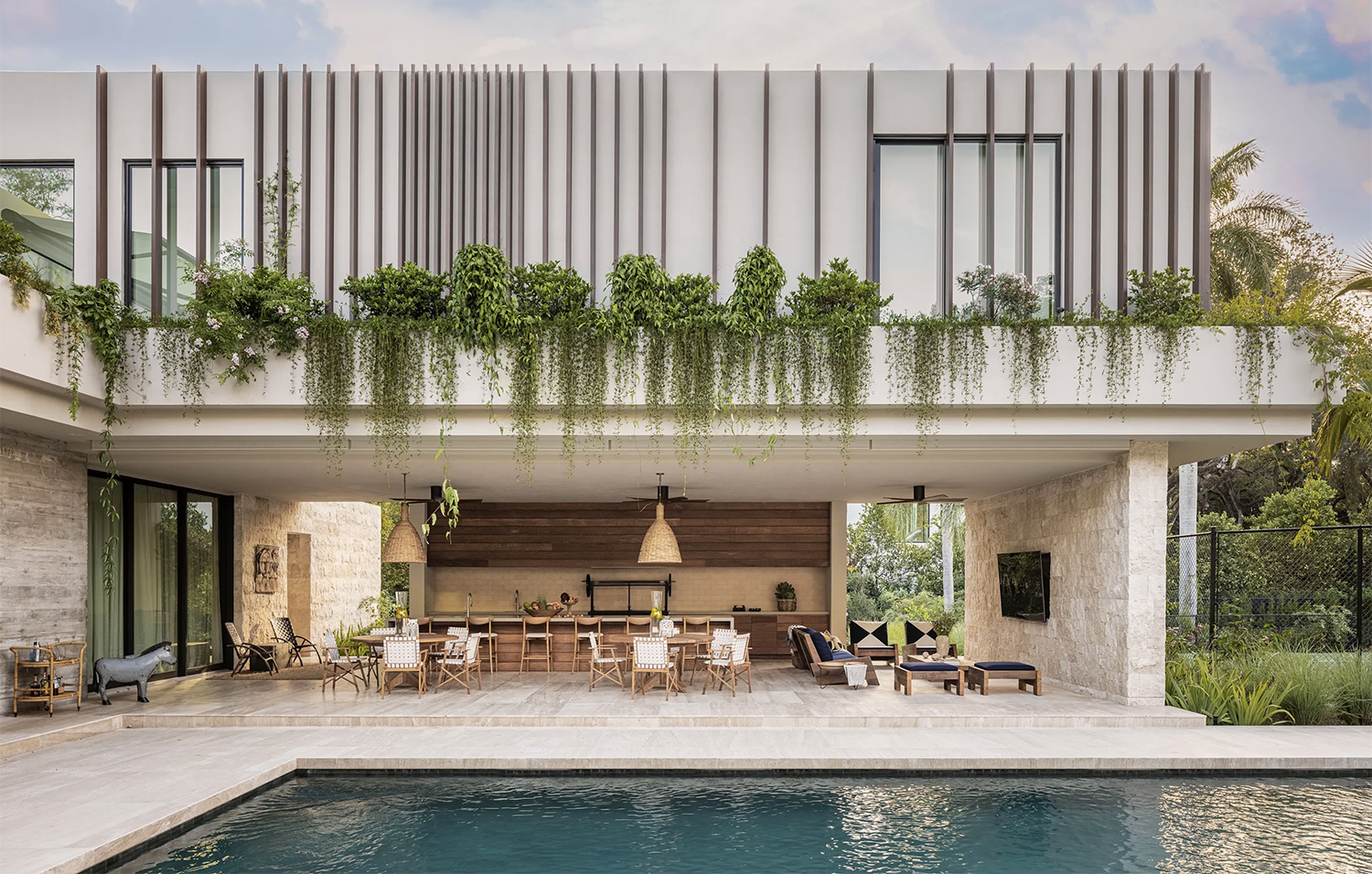
It is always a challenge to design a new house that doesn’t scream NEW. This is especially demanding if the neighbourhood is well established, the house sizeable and the owners’ taste leans toward midcentury modernism. In addition, a sprawling interior that screams newness can feel coldly sterile and pretentiously fake and give off “display suite” vibes rather than feeling like a real home.
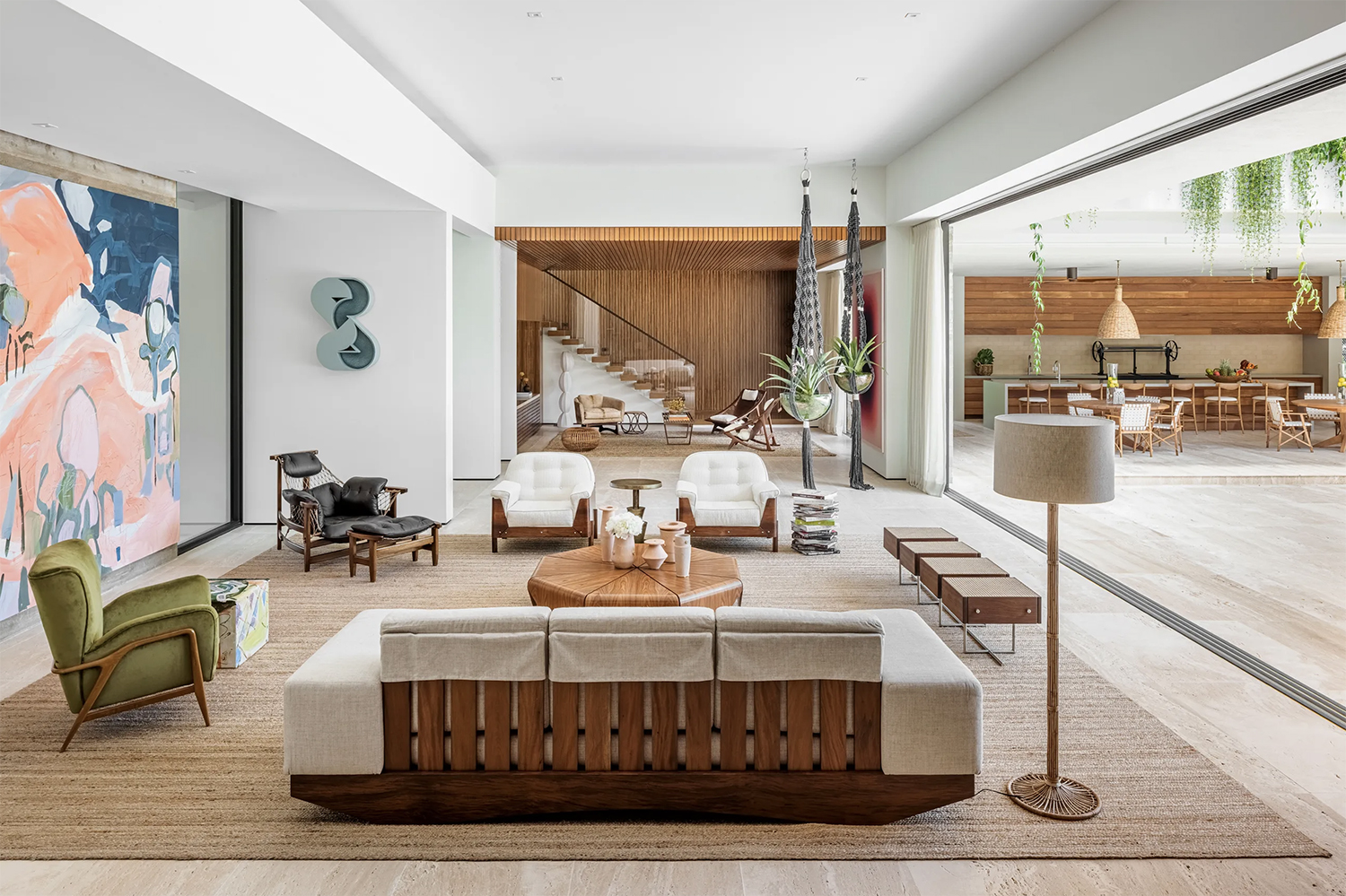
Designers and architects Max Strang and Alexandra Mangimelli of Sarasota and Miami-based Strang Design clearly knew what they were doing when they designed the 8,500 square-foot (800 sq.m.) home for their client in the Coconut Grove neighbourhood of Miami. The owners wanted a modern, sculptural house that takes full advantage of Florida’s lush greenery but also functions seamlessly as a contemporary home both inside and out. Most important, they wanted their Brazilian heritage to show. Their extensive collection of Brazilian furniture, furnishings and art functioned as the overall inspiration for the home.
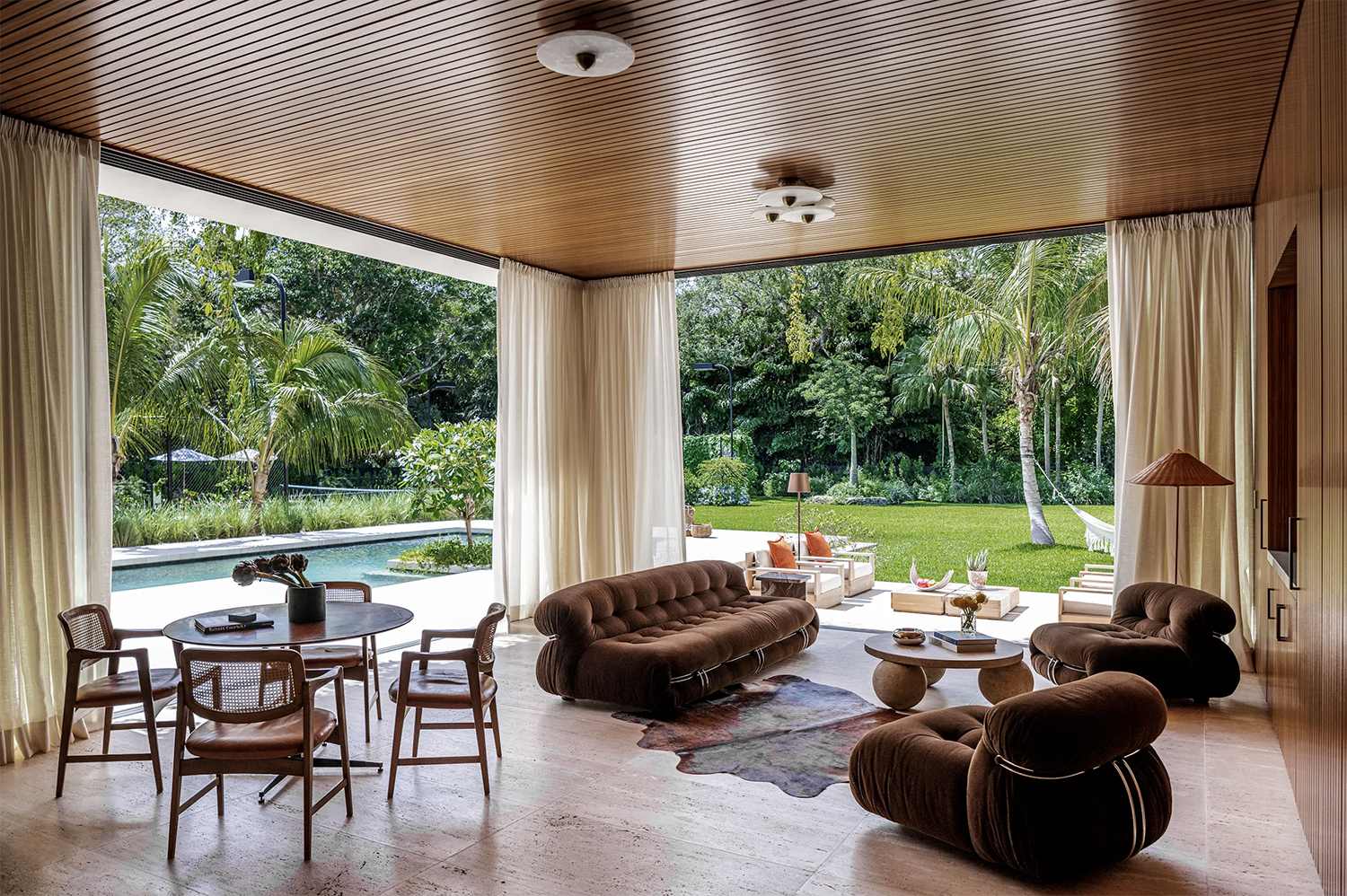
Material choices — board-formed concrete, travertine and Jerusalem limestone, teak and walnut wood — and the couple’s Brazilian collection carefully placed throughout the residence, give the house a tranquil atmosphere of modernist timelessness. It is an eclectic but harmonious environment that includes new and vintage, modern and heritage but with an overall sense of clarity. Nothing looks out of place or demands attention in an ostentatious fit of show-off.
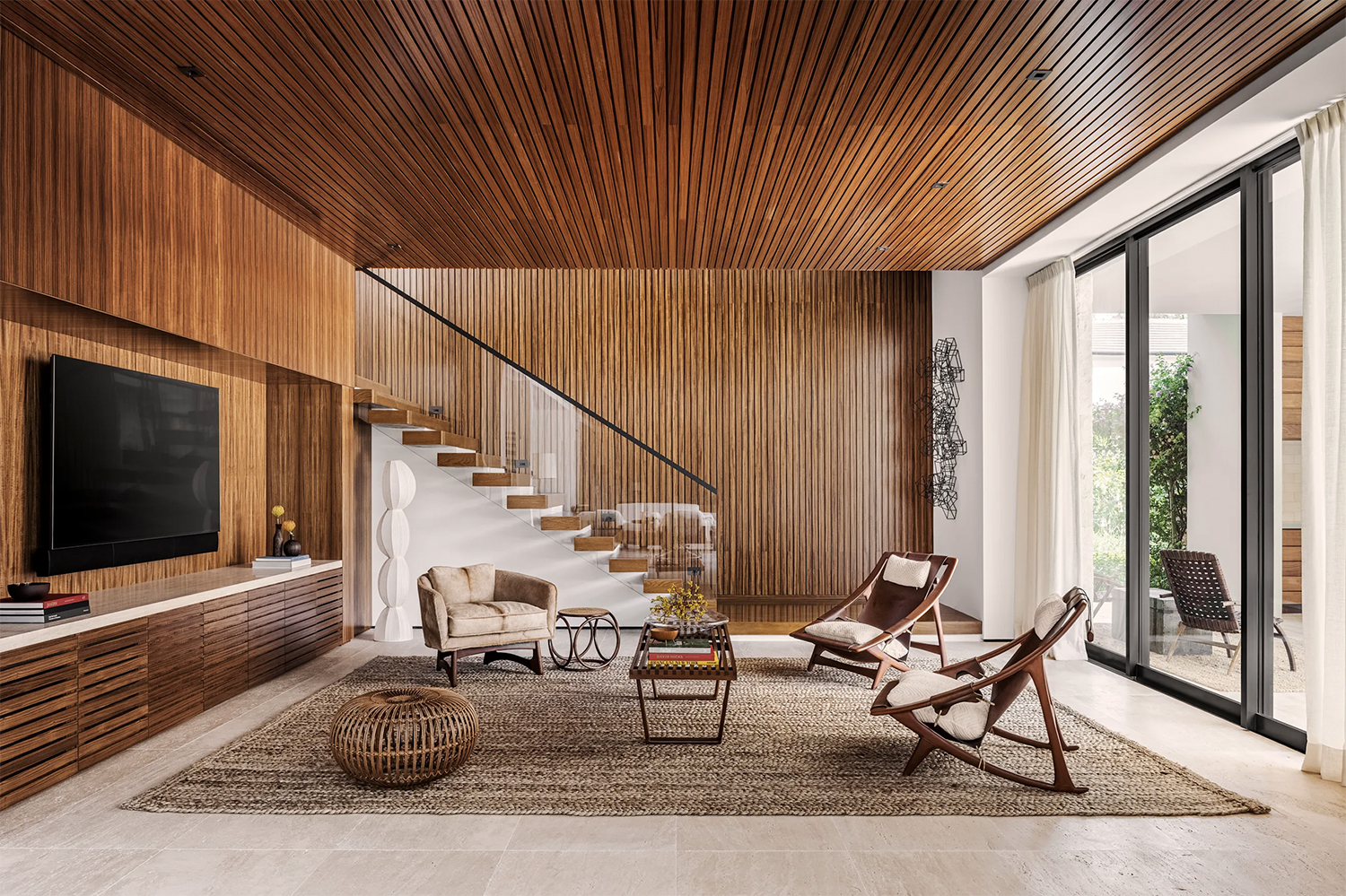
The owners’ Brazilian furniture collection includes several iconic mid-century-modernist pieces designed by Brazil’s well-known pioneers of the modernist movement. These include, for example, the gorgeous Petalas coffee table in the open-plan living room. Designed by the Polish-Brazilian architect and designer Jorge Zalszupin (1922-2020), the Petalas is surrounded by an eclectic collection of vintage seating.
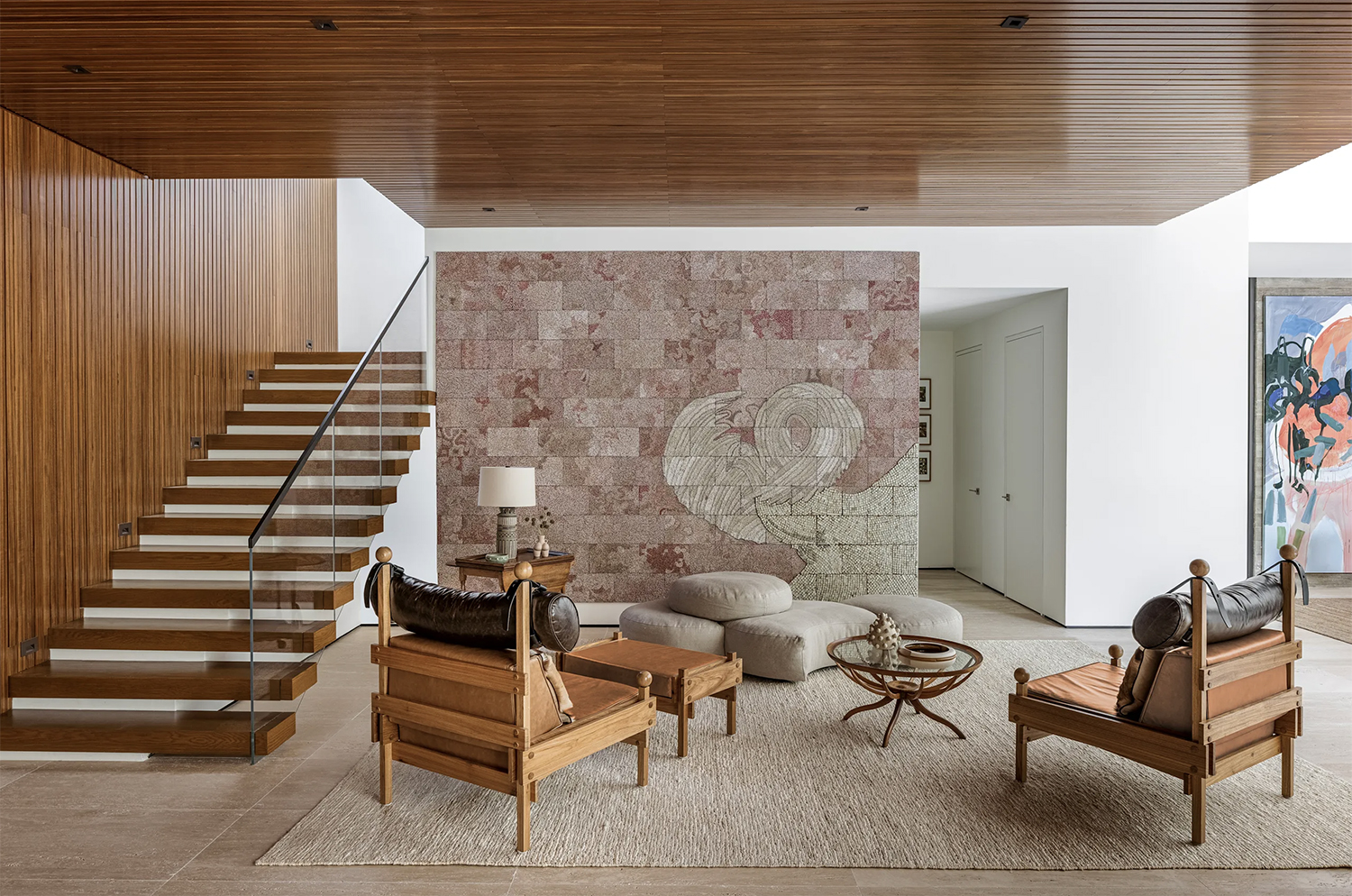
One of the chairs in this arrangement, the Jangada lounger and ottoman in black leather and imitation fishing-net support, is the best-known piece by the Romanian-Brazilian architect and designer Jean Gillon (1919-2007). The name Jangada refers to a raft traditionally used by Northeastern Brazilian fishermen.
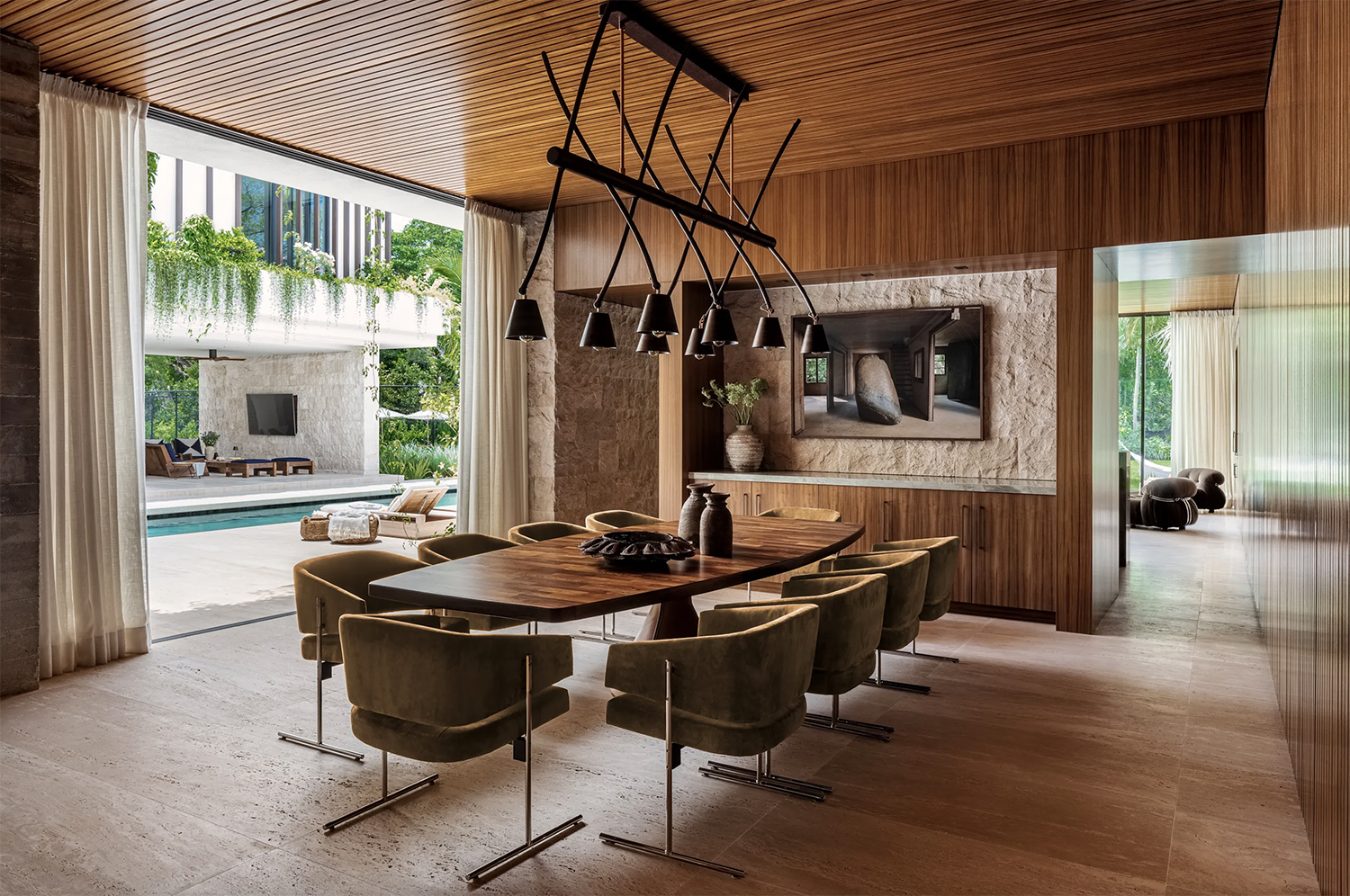
Another entry by Zalszupin can be found in the dining room, where nine of his upholstered and spindly-legged Senior Metal Lounge armchairs surround the teak table. Zalszupin’s work was influenced by Oscar Niemeyer who used Zalszupin’s one-off pieces in several of his projects. Niemeyer is Brazil’s best-known architect and one of the strong figures in the development of modern architecture, who died in 2012 at the age of 104.
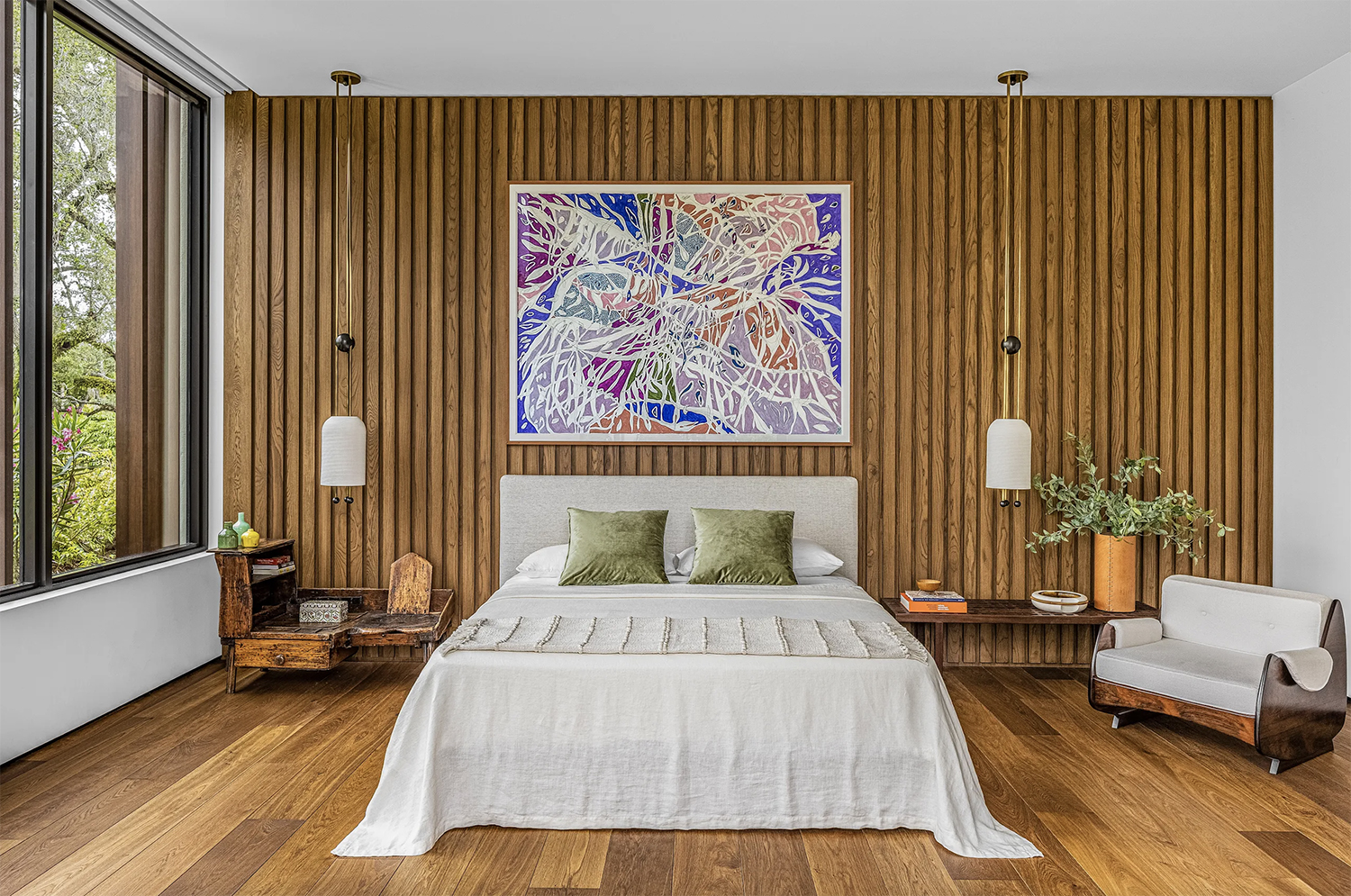
Another example of the owners’ impressive Brazilian collection is in the family room where two Tonico lounge chairs and an ottoman in natural-leather create an informal seating area next to the walnut staircase. The chairs were designed in 1963 by Sergio Rodrigues, the Brazilian Carioca-School architect and designer (1927-2014) who named the chair in honour of his brother, Tonico. The pioneering Brazilian architect is known as one of the key players in making Brazilian industrial design known worldwide.
The Carioca School was a specific mix of styles considered to be the cornerstone of Brazilian modern architecture. Architects working in Rio de Janeiro during 1930-1960 developed this style that became the precursor for the next movement in Brazil, the Paulista School. The best-known representatives and influencers of the Carioca movement were Oscar Niemeyer and the French-Brazilian architect and urban planner Lucio Costa (1902-1998).
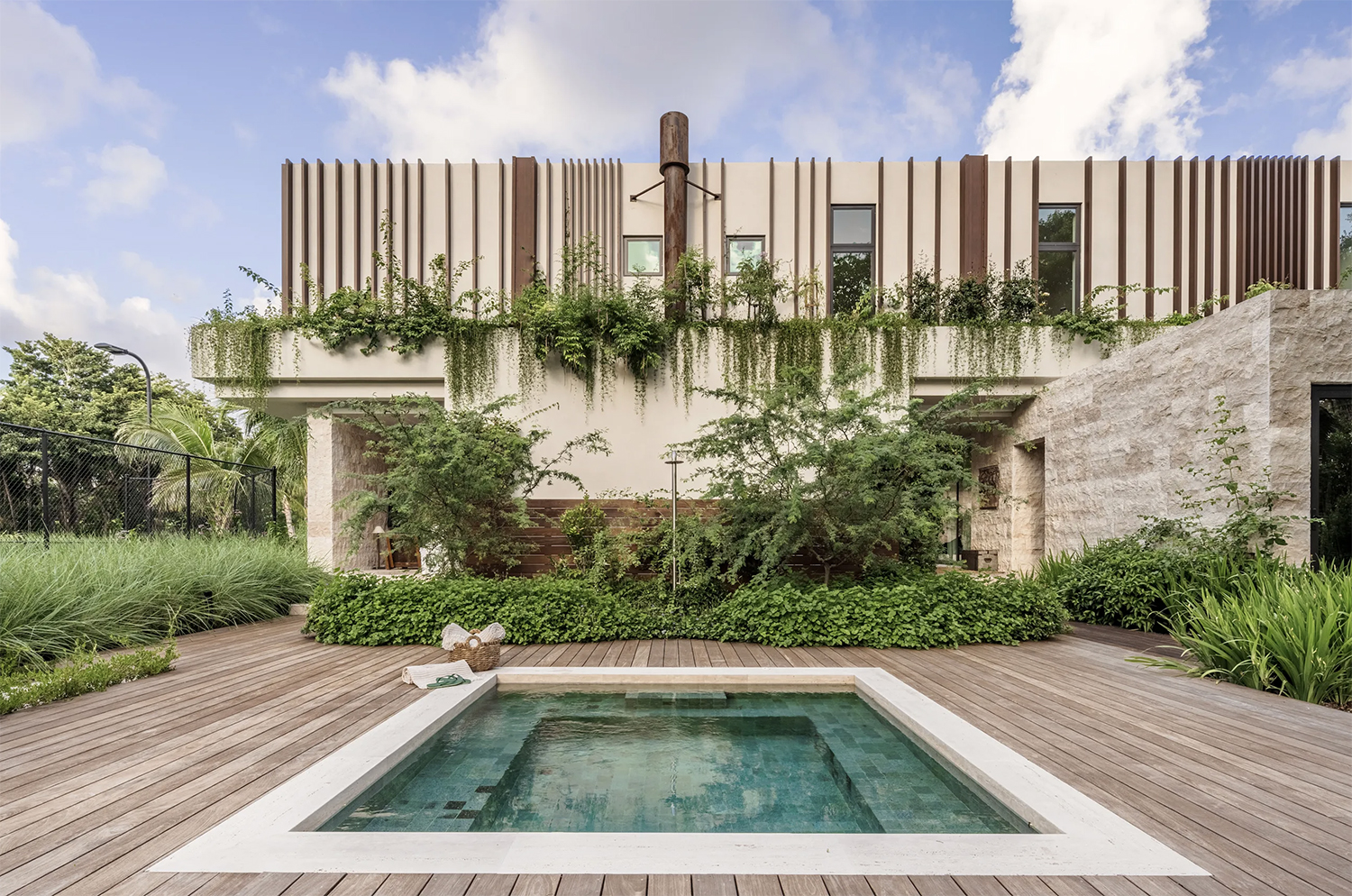
Coconut Grove, known as The Grove by locals, is a well-established, lush, upscale Miami neighbourhood on the shores of the Biscayne Bay, with many sailing clubs, marinas and restaurants. Current and former celebrity residents include Howard Hughes, Tennessee Williams, Madonna and Sylvester Stallone. Tuija Seipell.
Images Kris Tamburello













